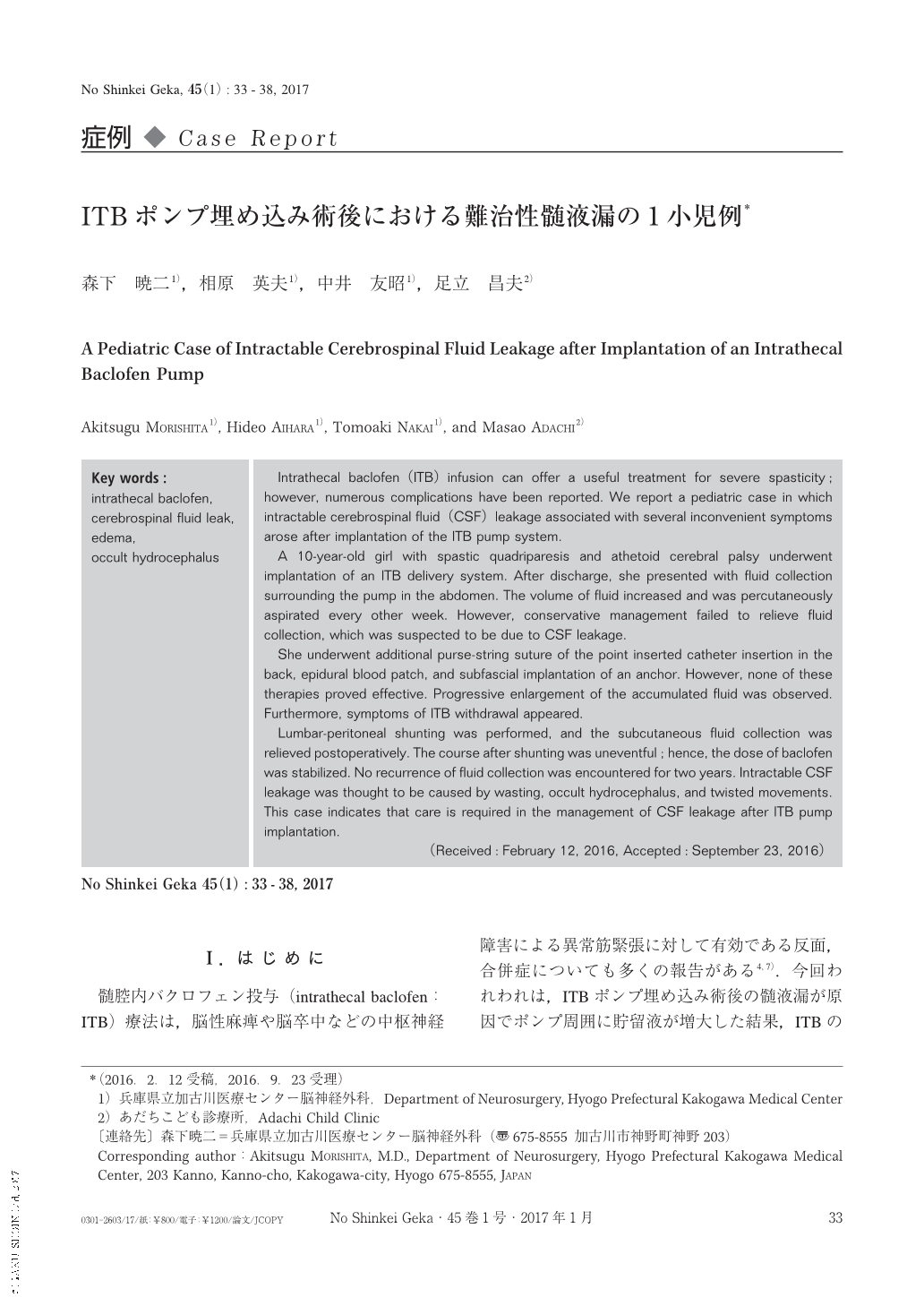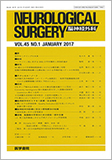Japanese
English
- 有料閲覧
- Abstract 文献概要
- 1ページ目 Look Inside
- 参考文献 Reference
Ⅰ.はじめに
髄腔内バクロフェン投与(intrathecal baclofen:ITB)療法は,脳性麻痺や脳卒中などの中枢神経障害による異常筋緊張に対して有効である反面,合併症についても多くの報告がある4,7).今回われわれは,ITBポンプ埋め込み術後の髄液漏が原因でポンプ周囲に貯留液が増大した結果,ITBの効果に影響を与え,離脱症状の出現などを併発し,治療に難渋した1小児例を経験したので報告する.
Intrathecal baclofen(ITB)infusion can offer a useful treatment for severe spasticity;however, numerous complications have been reported. We report a pediatric case in which intractable cerebrospinal fluid(CSF)leakage associated with several inconvenient symptoms arose after implantation of the ITB pump system.
A 10-year-old girl with spastic quadriparesis and athetoid cerebral palsy underwent implantation of an ITB delivery system. After discharge, she presented with fluid collection surrounding the pump in the abdomen. The volume of fluid increased and was percutaneously aspirated every other week. However, conservative management failed to relieve fluid collection, which was suspected to be due to CSF leakage.
She underwent additional purse-string suture of the point inserted catheter insertion in the back, epidural blood patch, and subfascial implantation of an anchor. However, none of these therapies proved effective. Progressive enlargement of the accumulated fluid was observed. Furthermore, symptoms of ITB withdrawal appeared.
Lumbar-peritoneal shunting was performed, and the subcutaneous fluid collection was relieved postoperatively. The course after shunting was uneventful;hence, the dose of baclofen was stabilized. No recurrence of fluid collection was encountered for two years. Intractable CSF leakage was thought to be caused by wasting, occult hydrocephalus, and twisted movements. This case indicates that care is required in the management of CSF leakage after ITB pump implantation.

Copyright © 2017, Igaku-Shoin Ltd. All rights reserved.


